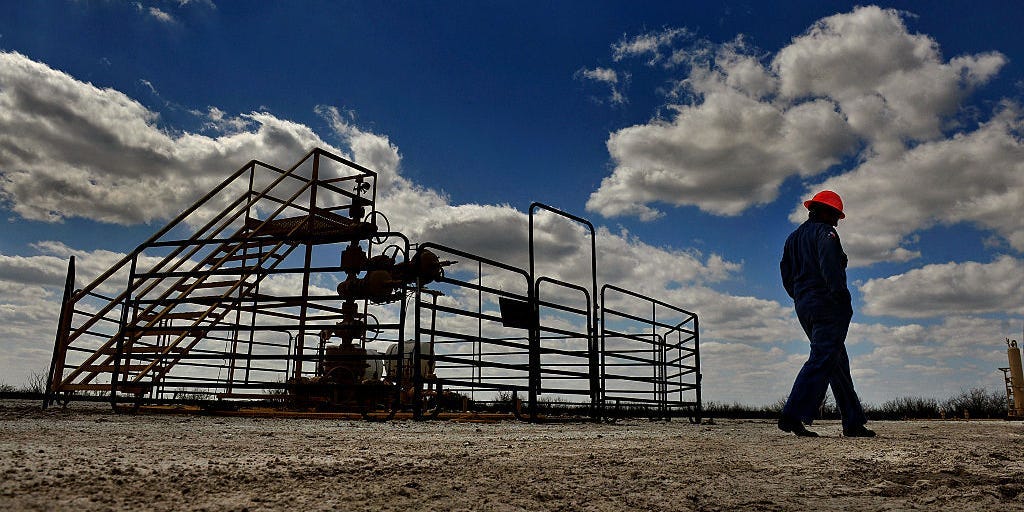- US shale oil producers could face more than $10 billion in hedging losses, per Rystad Energy.
- Currently, operators have 42% of their expected crude output for the year hedged at $55 a barrel.
- WTI oil prices have shot up this year, soaring past $100 a barrel at one point after Russia's war.
US shale oil producers could face more than $10 billion in hedging losses this is year even as crude prices hover around the $100 a barrel mark, according to Rystad Energy.
Hedging is a form of risk management that allows oil producers or consumers to lock in a future price to protect against unfavorable price swings.
US shale producers however, hedged a large portion of their output for this year at prices that are well below the levels seen so far in 2022, meaning they've been unable to capitalize on the rally in crude to multi-year highs fueled by Russia's war with Ukraine.
According to consultant Rystad Energy, US shale oil producers currently have 46% of their expected crude oil output for the year hedged. Of that total, 42% is hedged at a West Texas Intermediate (WTI) average floor price of $55 a barrel. US crude is trading just below $90 a barrel, having hit a high this year above $130.
To that effect, shale companies reported an average loss of $21 a barrel in the second quarter from selling at their hedged prices, Rystad said.
"With huge losses on the table, operators have been frantically adapting their hedging strategies to minimize losses this year and next," said Alisa Lukash, vice president at Rystad Energy.
Many shale operators have successfully negotiated higher ceilings for their 2023 crude oil contracts, so even if oil prices fall next year, they won't be as exposed.
WTI prices have risen nearly 30% year-to-date thanks to Western sanctions on Moscow's energy sector squeezing supply in the domestic market and US producers have raced to export their crude to places that would normally have bought Russian oil.
Rystad said it had analysed the results of 28 shale producers whose estimated output accounts for nearly 40% of total shale output, including Chesapeake Energy, EOG Resources and Hess. It said the group includes all public hedging activity in the sector but excludes the so-called "supermajors" such as Exxon or Chevron, which do not use derivatives to hedge their output, or privately owned producers, which don't publish information on their hedges.
